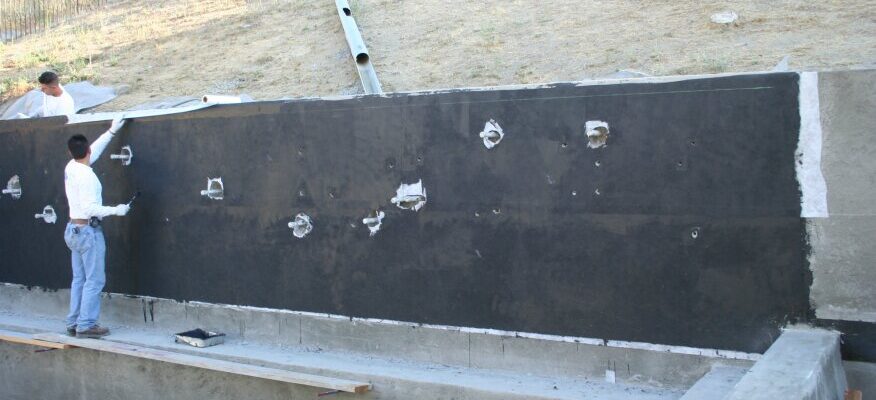Pros Talk Waterproofing Pools and Spas
With ever more complicated pools and spas, waterproofing continues to confound
It may be an exaggeration to refer to waterproofing failures as “nightmares.” But sometimes it’s barely a stretch.
Consultants get to hear the horror stories. Designer and consultant David Peterson spoke with a plasterer dealing with one disaster. Without telling anybody, the general contractor had applied a waterproofing system to the pool shell before the plasterers came in. The finish material was then applied. “The next spring, when they go to open up the pool for summer, the plaster is coming off in giant sheets,” says Peterson, president of San Diego-based Watershapes Consulting.
With features such as vanishing edges and raised walls becoming commonplace, waterproofing is more important than ever. If the installation directly abuts the home or is suspended on the second floor or higher, there is no room for error. And there are so many systems on the market. Not only must a builder choose the right one for the application, but then it must be applied in the right conditions.
There is still quite a bit to be learned about waterproofing pools and spas. But here, some of the best contractors in North America share what they’ve observed so far about what types of compounds to use in various applications, and they discuss commonly made mistakes to avoid.
A conundrum
Waterproofing pools and spas to protect them from efflorescence, popped-off tiles, or delaminations is to walk a tight rope. The product must truly waterproof the vessel — in a way that preserves the aesthetics of the veneer going over it.
Some are tempted to look at products that have worked with related industries. But they don’t really compare.
“I don’t care if the product has been used for 30 years behind retaining walls, it’s not the same thing as a swimming pool,” Peterson says. “And if you look at water-treatment plants, they’re not putting plaster in their vessels — it’s just a purely functional water-tight tank. That’s completely different from trying to waterproof something that’s got a pretty-looking finish on it.”
Additionally, shells sometimes need protection against water on the positive side — on the face of the surface you’re trying to protect. Other times, it must be protected from seepage coming from behind the wall — or the negative side.
Negative-side protection has become more important with the popularity of vanishing-edge pools. “We’ve learned that a lot of glass tile failures have to do with water coming through from the backside of the pools, pulling contaminants from the concrete and mortar beds along with it and [building up] calcium deposits and efflorescence around and behind the glass and wreaking havoc on the glass,” says Greg Andrews, cofounder of National Tile and Stone Authority, a consulting and research organization.
The selection of systems can become overwhelming.


